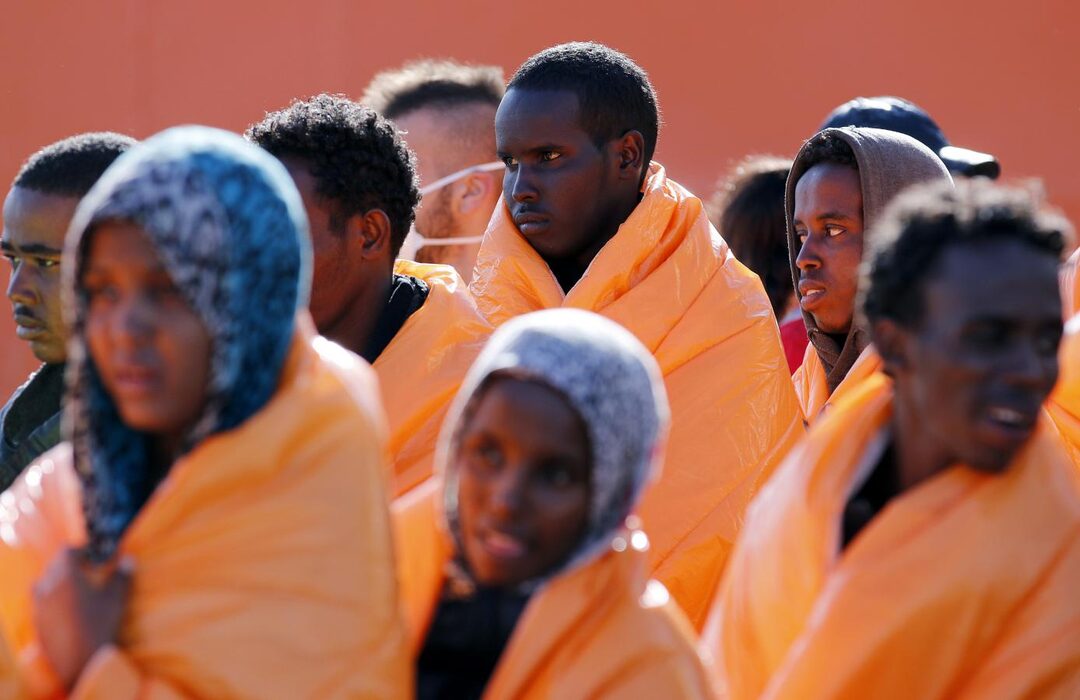Somali migrants still risk deadly routes to Europe despite drop in arrivals- Report

The Displacement Tracking Matrix (DTM) Flow Monitoring Surveys Europe Regional Report, released on Friday, shows that Somali migrants continue to use dangerous migration routes.
Thousands of Somalis continued to flee their country in 2024. They face dangerous journeys as they try to reach Europe. Many are escaping war, poverty, and harsh weather conditions.
The Displacement Tracking Matrix (DTM) Flow Monitoring Surveys Europe Regional Report, released on Friday, shows that Somali migrants continue to use dangerous migration routes.
These include the Central Mediterranean, Western African Atlantic, and the Western Balkan Routes.
The International Organization for Migration (IOM) said overall, economic reasons are the most reported drivers for migration (54%), followed by reasons related to the desire to escape from personal targeted violence (30%) and the presence of war or conflicts in the origin country (21%).
DTM Europe gathers, validates, and disseminates information on migrants and refugees travelling through the Mediterranean, Western African Atlantic, and Western Balkan routes to Europe.
In 2024, migrant arrivals in Europe dropped by 29% compared to 2023.
Italy, Spain, and Greece each received about a third of these migrants.
However, the Mediterranean route, mainly used by Somali migrants, saw a 58% drop.
Despite this, the route remains deadly.
At least 3,641 people died or went missing on all routes in 2024.
On the Mediterranean Sea alone, 1,719 deaths were recorded. Most died from drowning.
Overcrowded and unsafe boats are a major cause of these deaths.
The UN Migration Agency noted conflict is the main reason why Somalis migrate, and about 30% of the migrants on the Mediterranean route said war and violence pushed them to leave.
Somalia has faced decades of conflict, clan fighting, insurgency by Al-Shabaab, and natural disasters like droughts and floods are ongoing problems.
According to the Displacement Tracking Matrix (DTM) Flow Monitoring Surveys Europe Regional, most Somali migrants are young men, making up 87% of those surveyed.
"But Somali women also migrate. Though they are only 13%, they face serious dangers," the agency highlighted.
"Women often report domestic and gender-based violence as their reason for leaving," said the Migration-focused UN agency.
Most migrants travel alone. But 68% of Somali women travel with family. They hope to stay safer that way.
The journey remained risky in 2024, over 155,000 people were intercepted and returned at sea, statistics slightly lower than the 2023 annual report.
The UN agency noted that many deaths are never reported, saying, "These 'invisible shipwrecks' make it hard to know the true number of victims.”
Once in Europe, Somali migrants need support. Half ask for help finding jobs. Others need documents (29%) and language training (25%).
Some also need legal aid (16%) and safety protection (9%).
Somalia’s problems are far from over. Violence, poverty, and climate change continue. Migration is likely to continue unless conditions improve.
IOM urged safer migration options. It also called for more support for vulnerable groups, especially women.
Somali migrants continue to risk their lives in search of hope and a better future.
In addition to Somali migrants, people from many other countries also risked their lives to reach Europe in 2024, according to the report.
"Migrants from Eritrea, Sudan, Ethiopia, Nigeria, Mali, and the Democratic Republic of Congo are among the most represented on dangerous migration routes," said IOM.
Many are fleeing war, political persecution, poverty, and climate disasters.
Like Somalis, they travel through the same routes.
The route remains the deadliest, especially for migrants departing from Libya and Tunisia, Syria, Afghanistan, and Iraq.
Despite increased border controls, thousands continue to attempt these journeys.
Migrants from across Africa, the Middle East, and parts of Asia face similar dangers and share the same hope for safety, stability, and a better life in Europe.
